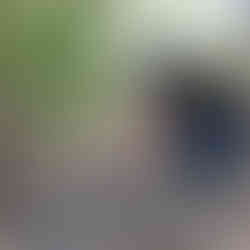
Matanzas Sound Map (2017), by Neil Leonard and Maria Magdalena Campos-Pons, is a mixed media installation that explores the sonic landscape of Matanzas, from the harbor neighborhoods where iconic musical forms were born to remote estuaries where one imagines Cuba as it sounded before human intervention. The installation creates an aural cartography made in collaboration with sugar growers, musicians, musicologists and scientists. (Photo by Angelos Giotopoulo)
10-channel of audio diffusion, projected video, cast glass, blown glass, handmade paper, coconut tree bark, coconuts shells, stone.
Thursday, April 6 - Sunday, July 16, 2017
Athens School of Fine Arts (ASFA)
Nikos Kessanlis Exhibition Hall
Pireos 256
18233 Athens, Greece
RESEARCH AND AUDIO SOURCES
All sounds were recorded by Leonard with the participants knowing that they were being recorded for this installation. The sound is presented in two asynchronous loops in two spaces. In the main gallery, sound is presented in three vignettes, each including sounds of nature, human voice and saxophone. Primary sounds include ocean, wetlands, folkloric musicians, street criers, a bar tender and a domino game. The reoccurring saxophone passages serve to suggest a slow breathing rhythm while one enters the piece.
The sounds were recorded over several trips to Matanzas, a province that Leonard has recorded since 1986. The research for this project enabled Leonard to return to Matanzas repeatedly over a one-year period and listen to new musicians, ambient sites and extend the conversation with Cubans about sound in the province. He recorded using mono, stereo, multi-track and Ambisonic (360-degree recording) technologies. The resulting 10-channel sound piece that incorporates an array of multichannel diffusion approaches.
Leonard set up a make shift recording studio in the local theater Cine Atena. He invited leading folkloric singer Raphael Navarro to collaborate in the production, organizing musicians, selecting repertoire and leading the ensemble. Other recordings of musicians playing Afrocuban sacred music were made in living rooms in the sugar producing regions of Limonar and Manguito. Environmental field recordings were made in collaboration with biologist Nelvis Gómez-Campos.
SONIC CARTOGRAPHY
The sound cycles between three elements: environmental sounds, song/speech and ethereal electronic sound, all of which can overlap at times.
Environmental sound include field recordings made in Ciénega Zapata, a 4162 square kilometer biosphere where insects and birds seem to own the land and sing a collective song of the Americas. Songs and chants are sung by a group organized by iconic rumba singer Raphael Navarro and members of Los Muñequitos de Matanazas. Urban voices were recorded around Calle Medio, the main boulevard in the city of Matanzas, where one hears the cathartic thunder clap of dominos as residents passionately compete on Sunday morning and the theatrical sound of street criers canvasing the town before global business arrives from abroad to organize all advertising in alignment with foreign marketing campaigns. Electronic sounds were created by Leonard playing and processing the saxophone in Robert Rauschenberg’s studio in Captiva, Florida. The acoustics his 80”x40” space did much to determine the breathing and pacing of the piece and embody the immensity, quiet and creative power Leonard felt working in Matanzas.
ACOUSTICAL NAVIGATION IN THE SPACE
Eight speakers are distributed throughout the main gallery surrounding the sculptures. Speakers are installed at ear-level. Two speakers are installed at the base of the stairway leading into the gallery. Within these spaces one hears an antiphony of Ambisonic, quadraphonic, stereo and mono diffusion.
ACKNOWLEDGEMENTS
Adam Szymczyk (Director), Monika Szewczyk (Curator), and Daphni Antoniou (Curatorial Assistant) from documenta 14, all provided important insights and support, without which the piece would never have been created. El Almacên, a Matanzas based media production collective helped with recordings at Cine Atena. Mixes were assisted by Berklee College of Music alumni Joe Branciforte, Nassos Vynios and Nikhil Singh. Nassos Vynios generously provided over a year of logistical support in Athens.
Audio production for Matanzas Sound Map was funded by documenta 14, The Rauschenberg Residency/Robert Rauschenberg Foundation, Robert Nagle and Berklee College of Music.
















